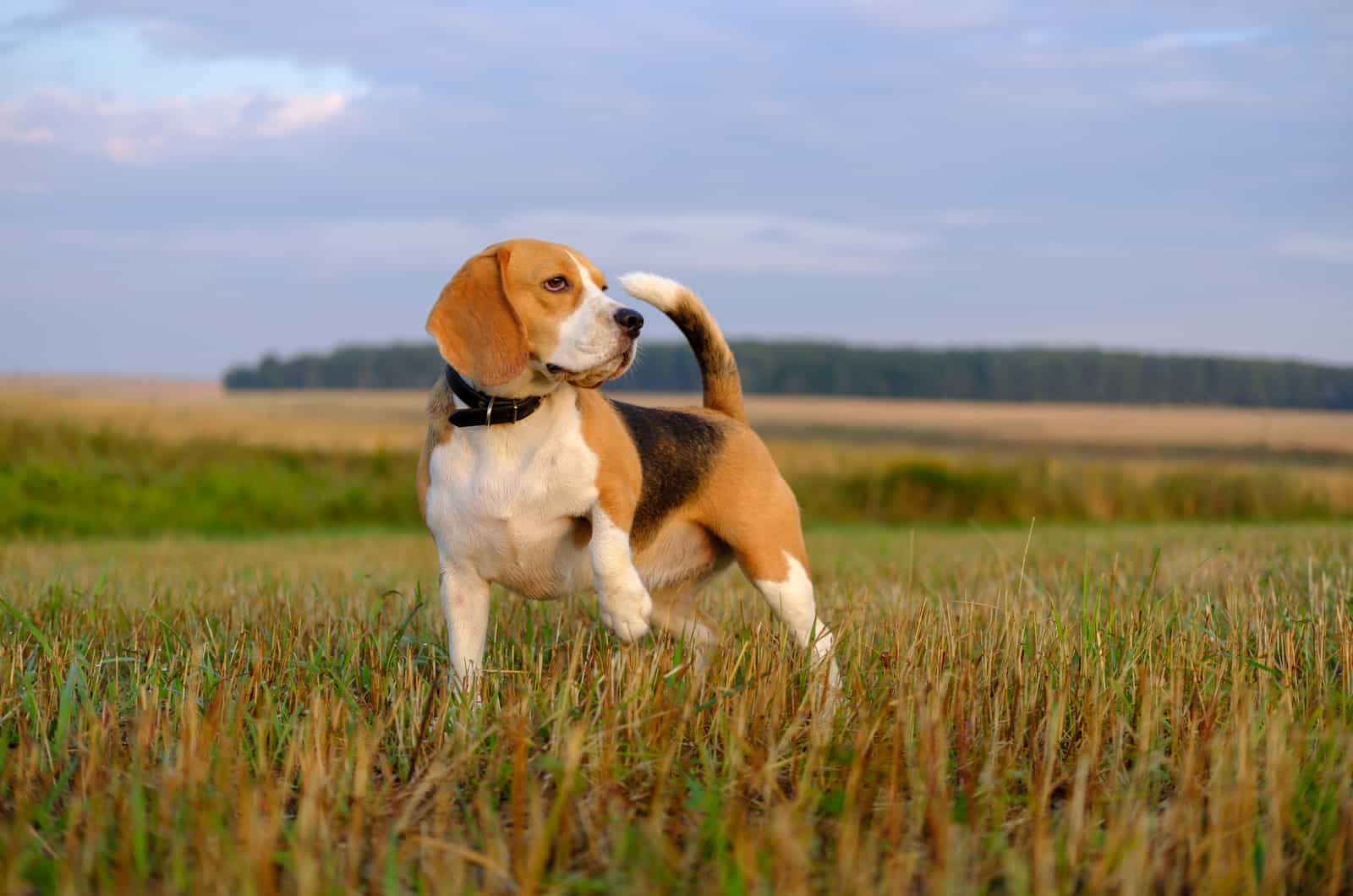You are probably thinking of getting a Beagle puppy at the best Beagle breeder and want to learn more about the origin of the breed.
The Beagle is a hound dog which is considered a popular dog breed and a fabulous family pet. The word Beagle was derived from the Gaelic word “beag,” which means “small.”
Even when you compare male and female Beagles, they both tend to weigh under thirty pounds if you examine your typical Beagle growth chart!
This high-energy dog has a lot to offer besides their cute characteristics, which include their longer bodies and ears, as it isn’t among popular breeds for just any reason. Even Queen Elizabeth I was known to keep them!
You might be wondering what were Beagles bred for considering their popularity. Overall they have been bred to be hunting hounds and scent hounds, just like Blood and Basset Hounds. They also do not have many inherited health problems.
Their senses are quite sharp, and they help hunters hunt down prey with their amazing capabilities and temperaments.
In this article, we will break down the history of this incredible pup and teach you what were Beagles bred for.
Relax as we take a journey throughout time!
What Were Beagles Bred For?
You probably have guessed it: these fun-loving dogs were mostly probably bred for hunting down small game such as rabbits.
Back in the day, the Beagle was much smaller than it is today. They were so small that they were called pocket Beagles, since they could actually fit into someone’s pocket. They were perfect for hunting smaller animals and easier to transport from place to place.
The Origin Of The Beagle
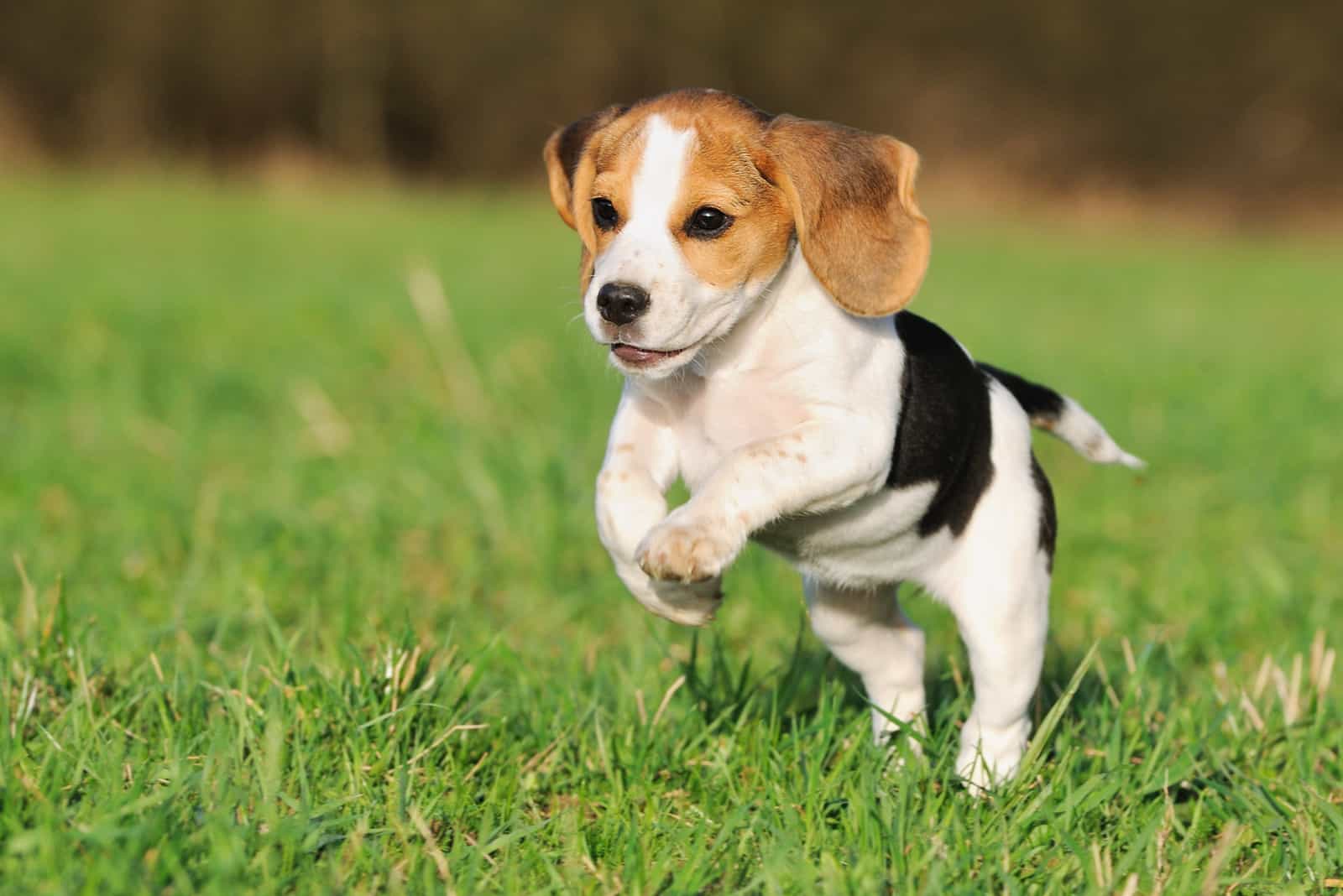
If we look at purebred Beagles, you will recognize that its history is difficult to track. During the time of the Roman Empire, we know that this dog breed most probably resided in England and that they became popular when it came to rabbit hunting and fox hunting.
The Beagle back then was smaller than the ones we find today. It is a scent hound that might look like the foxhound, apart from the fact that the latter is bigger.
However, it is distinct from the Basset Hound that people commonly mistake it with, since both have a Snoopy-like appearance.
In the 1830s, the breed of Beagle that we see today was produced in England from a blend of different breeds: the Southern Hound, Talbot Hound, the North Country Beagle, and perhaps the Harrier as well.
Reverend Phillip Honeywood is thought to have been responsible for the first pack of Beagles to be bred during this time period, which is thought to be the foundation for the breed that we find today.
All of the breeds were grouped by the AKC based on their functions and history.
The Beagle Throughout The Ages
There is certain common information regarding the development of the Beagle that might give us more information about how the breed developed throughout the ages, though we cannot know any of this information for certain.
Grecian Dogs
Some evidence has been found that this adorable pooch might have originated in ancient Greece around the fifth century, since there were dogs in this area that were also used for the purposes of hunting, just like our furry friend.
The Talbot Hound
This is one of the hounds that we have mentioned earlier that the Beagle was developed from.
In the eight century around today’s France and Belgium, the Talbot Hound was created from the St. Hubert Hound, both of which were used for hunting.
Supposedly, William the Conqueror from the eleventh century returned to England with a Talbot Hound.
The Southern Hound And The North Country Beagle
The Southern Hound was believed to be the result of breeding the Talbot Hound, notable for its short legs, with the Greyhound, in order to produce a breed that could outperform its parents.
These dogs were notable for their amazing scent of smell and physical prowess. They have also passed onto the Beagle its characteristic floppy ears, which makes them rather cute.
The history of the North Country Beagle, however, is less noted. We know that the breed was found to be from the northern areas of England.
However, it is also possible that this breed arose from the pre-roman Celts—dating much earlier than the Southern Hound.
The North Country Beagle was used for hunting larger game, such as deer, because it was larger than the Southern Hound. However, the Southern Hound was the better scent hound of the two.
The Foxhound
In the seventeenth century, fox hunting became more popular with the decline of deer hunting, and the abilities of the North Country Beagle and Southern Hound could not quite catch up with the trend, which led to the rise of the Foxhound and the Harrier Hound.
As the name suggests, the Foxhound was well-equipped to hunt foxes. The smaller Harrier Hound was bred from the Foxhound and was a bit bigger than today’s Beagle.
Beagles were later produced from a Harrier Hound and a Southern Hound—back then, Beagles were known as the “little Harriers.”
The Pocket Beagle
Before the modern day Beagle, the Beagle of the old ages used to be really small—hunters could hold them in their pockets, which was why they were called pocket Beagles!
Some of them were so tiny that they could be as small as your fist. They were around seven to twelve inches tall, rather like the adorable Chihuahua that we all love so much.
However, these little hunting dogs had the issue of not being able to carry back the prey once they caught it, which was why the Beagle as it is today became of better use.
The Beagles of today were bred with the ability to carry smaller game back after they had caught it.
The Beagle
The Beagles back in the age were a bit different from the breed standard today described by the AKC or the National Beagle Club of America.
The 19th century records demonstrate that the Beagle was recognized as a breed earlier, but it was only in the mid-1800s that the modern Beagle started to come into the picture and the separation between Beagles as southern and northern Beagles began to fade away.
An English man by the name of John Henry Walsh wrote about the varieties of Beagle in one of his articles, stating that there were four different types of Beagle: the Fox Beagle, Medium Beagle, Dwarf Beagle (Pocket Beagle), and Terrier Beagle.
It is a known fact that a variety of dog breeds were going extinct during this period. However, with certain institutions that adored the Beagle breed, a standard was created, protecting the line of Beagles to come.
Beagles In The U.S.
There are different stories about how this breed arrived in the U.S. Some claim that some Irishmen took them over to the U.S. However, others suggest that the American standard of Beagle developed in the 1870s.
It started with General Richard Rowett, who was known to be a Beagle breeder and exported the breed from England. After thirty years, the Beagle was finally recognized by the American Kennel Club.
Why Are Beagles So Good At Hunting?
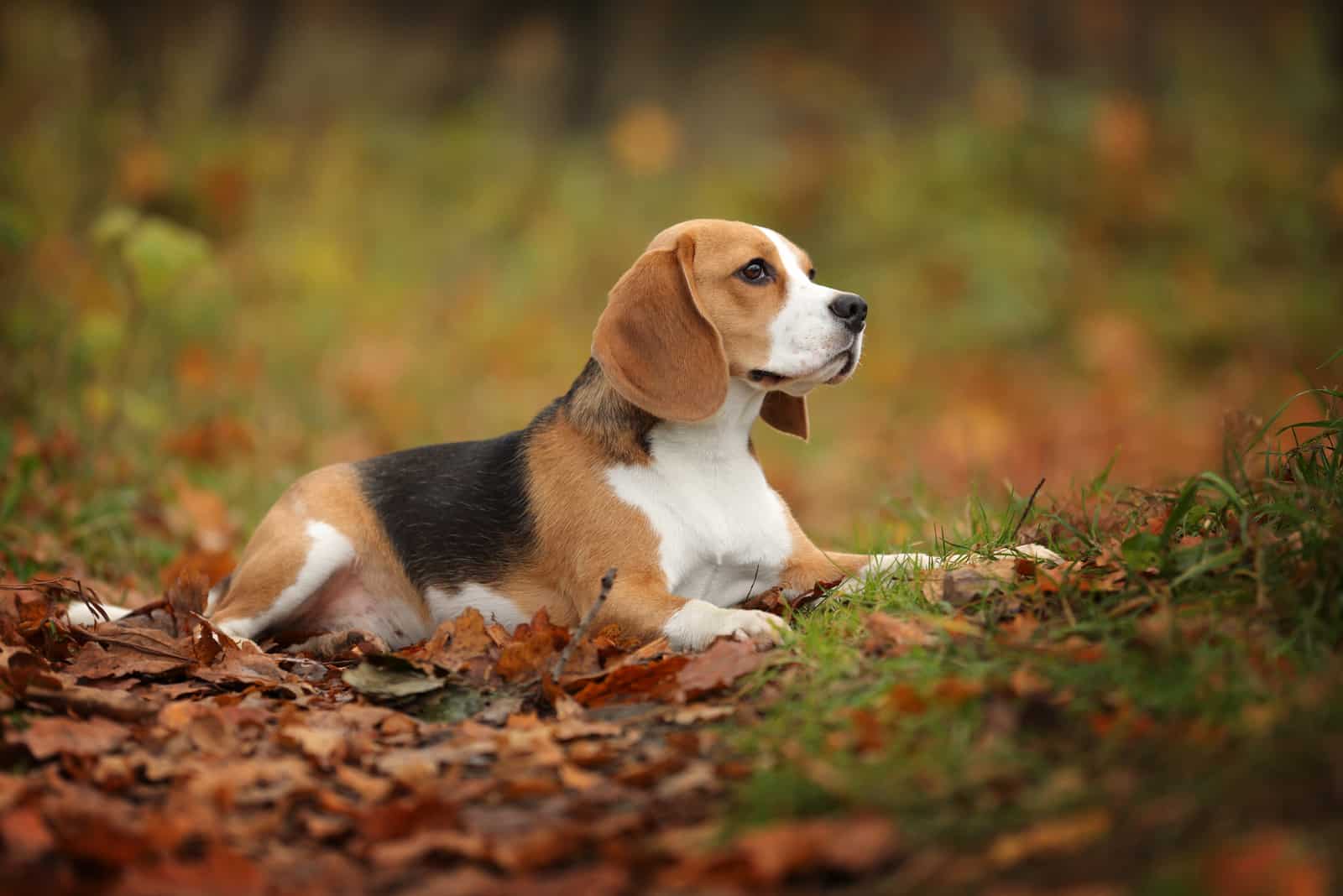
Like we have mentioned previously, Beagles were bred for the hunt, which means that the characteristics that we see today are similar to those back in the ages.
Beagles are considered small dogs, which means that they are fantastic for fitting into places that other dogs can’t get into.
Such spaces could be smaller holes or dens where you could potentially find rabbits or other small game.
Beagles have no problem getting themselves into these places; additionally their fantastic senses give them the ability to catch prey that would otherwise be difficult to find. Try getting your Lab Retriever in a small rabbit hole!
Since Beagles are considered tiny, they can quickly get into a hole and snatch their prey without having to do additional dig-work, like a larger dog. This gives the prey animal much less time to figure out how to escape.
Another perk of being small means that you won’t be spotted as easily by prey animals, which can’t be said about larger dogs. If your hunting dog is larger, it will scare off the animal you want to hunt down much more easily than your little Beagle that had once resembled the small Dachshund.
Beagle’s Superior Scent And Smell
What were Beagles bred for? Well, their superior sense of smell might be up there.
We all know that dogs have a better sense of smell than humans, but did you know that the Beagle has around 220 million receptors in their sensitive noses?
Humans only have around five million.
They also have an incredible ability to hear noises such as twigs being broken or even grass rustling from very far away, which makes them great for hunting prey.
They are, without a doubt, one of the best hunting dogs out there with these characteristics!
The Best Hunting Companions
What were Beagles bred for might also be answered in a statement: they make the best hunting companions out there!
With their superior hearing and sense of smell, they are able to sniff out a specific scent and track it even though it might be a hundred feet away.
This makes it easy for a hunter to allow the Beagle to do what it does best and follow it until he finds the prey, making the hunting process much easier than it would have been otherwise.
The great thing about Beagles is that it is easy to follow them on foot because of their short legs when compared to larger breeds that might be more difficult to keep up with.
You won’t need to put in extra effort to make sure you keep up with your dog at all times like you would with other breeds. This makes the hunting experience much easier and less stressful.
The Best Hunting Environment For A Beagle
Today’s Beagle will probably be found curled up at home on a couch then pursuing game adventurously with their owner.
However, if you do happen to be a hunter who is looking to maximize your Beagles potential, we’ve got you covered.
You might be wondering what is the best environment for your Beagles, should you choose to use your buddy for hunting.
You would be right to ask yourself this question; even though the Beagles hunting abilities are extraordinary, you can do things to tweak the odds in your favor when it comes to hunting.
For instance, you don’t want to use your Beagle for hunting in areas where there is a lot of dense undergrowth, such as bushes and plants.
They have little legs which cannot really conquer all of those bushes and roots. It is quite challenging for them, and they are much more likely to get stuck than to help out in any useful way.
The best hunting environment for them are large open areas that have grass that is freshly cut—think of open fields. Some hunters say that their spotted double coat has the benefit of camouflage in these areas as well.
Three Hunting Traits Useful To Owners
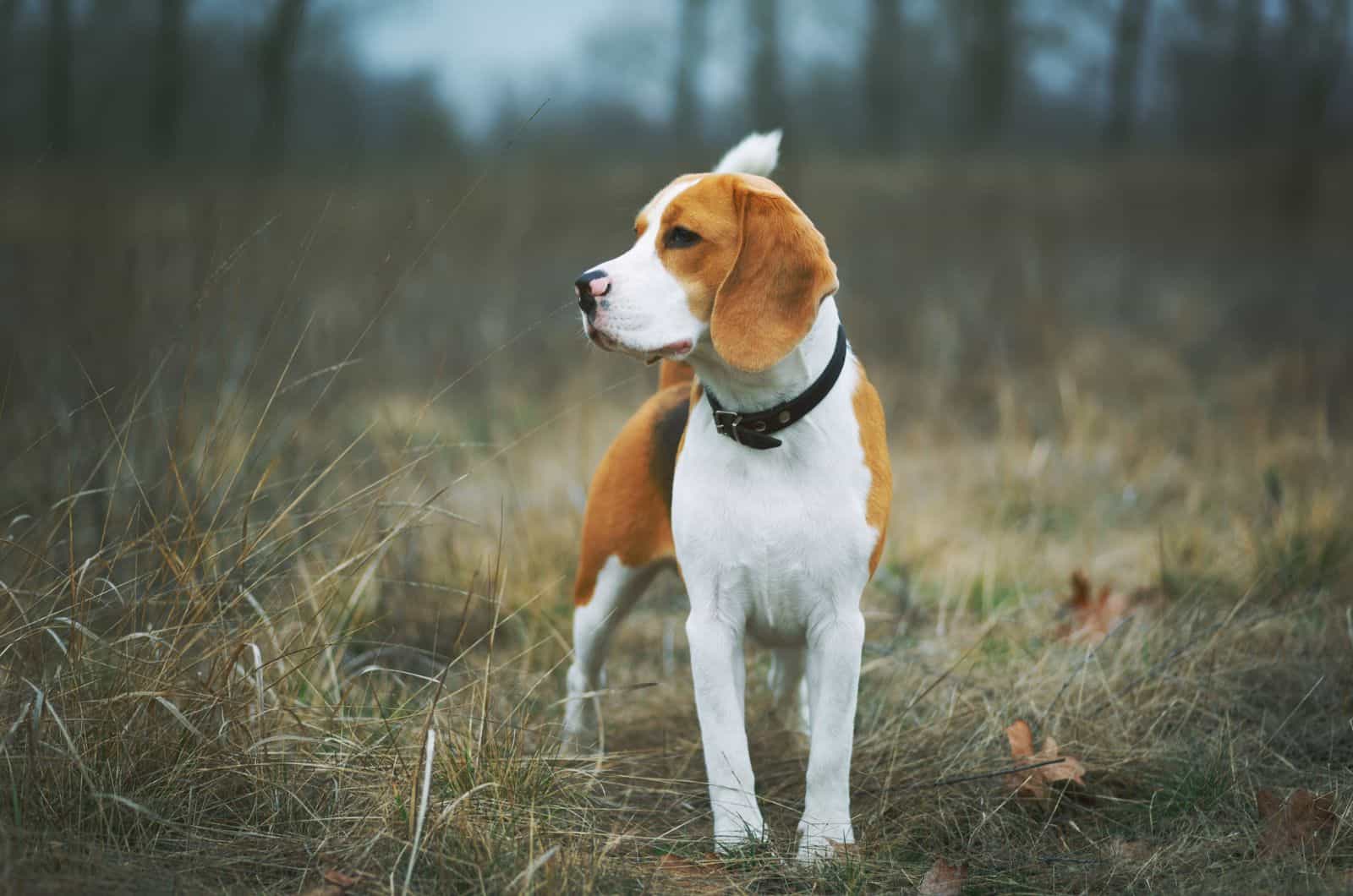
The interesting thing about evolution is that all species have certain characteristics that stick with them to this day that might have previously been especially important for their survival.
Beagles in particular use three sounds to communicate to their owners when they go for a hunt, which can be very useful if you learn how to distinguish what they mean. The three sounds are: baying, howling, and barking. They all mean different things.
Baying
If a Beagle is baying, it usually means that it is trying to alert its owner or other dog members about something.
When it comes to hunting in particular, Beagles use this sound when they have cornered the prey animal. They will circle the prey to make sure it cannot escape and bark immensely, allowing their hunter to know that they are waiting for them to arrive.
This action is known as “baying.”
Howling
Hounds are generally keen on howling whenever they hear particular sounds, but they also howl when they are hunting to communicate to the owner that their prey has been caught.
A Beagle will bay when it corners a prey to alert the owner of their location, but a Beagle howls to indicate that it has caught its prey.
Usually this sound is described by owners as loud and intense. The Beagle’s howl is so loud that many people listening to the sound would believe that the owner of such vocalizations is much bigger than it actually is, when in fact it is a small pup.
However, just because a Beagle howls does not mean it is hunting. Sometimes Beagles howl just because they are bored, joyful, or even wounded.
Barking
I think we can all guess that the Beagle is a loud dog. They are so loud that it is not recommended keeping them around smaller children—loud sounds simply startle kids.
However, when a Beagle barks, it is different from when it bays. Barks are a bit more exciting and short. They are rougher and sharper overall.
Baying is more like a bark and howl combined. It is like a longer bark or a short howl.
When you are in the middle of the hunt with a Beagle, a bark signals that he or she is almost about to capture an animal that you are chasing down.
However, in a modern environment, a bark might just mean that the Beagle wants something, like play or food. Sometimes, the Beagle will use a bark to warn other dogs off.
Thinking About Getting A Beagle
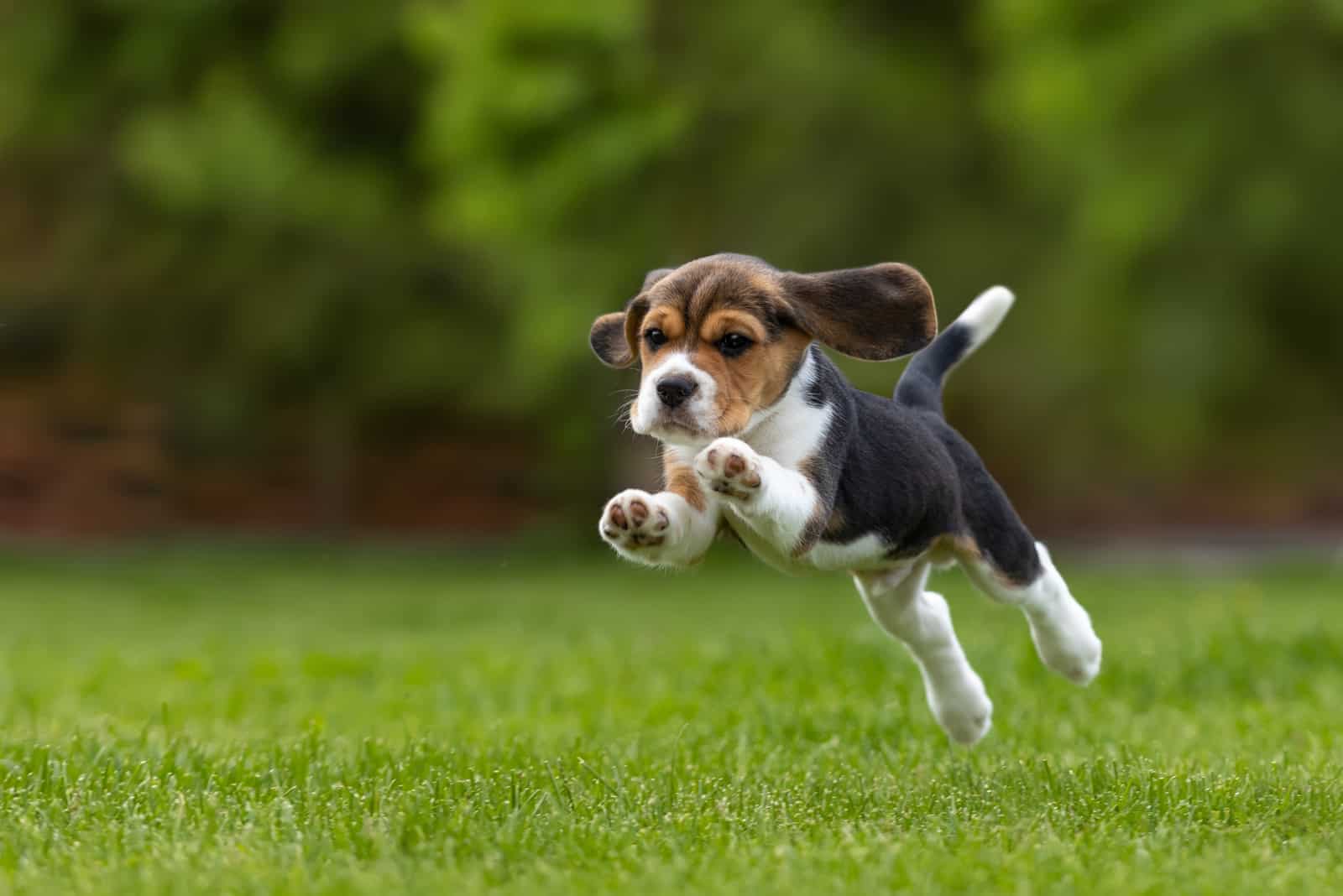
What were Beagles bred for might have been hunting primarily, but nowadays, people are mostly interested to have a fun and loving companion at home.
Because they are very social animals, you should not be surprised if they develop a sort of separation anxiety because they are animals that love being connected.
It is difficult having a dog that won’t leave your side, which is why you must do your research and ensure that your Beagle is trained properly.
You also might be asking the question: why is my dog barking at nothing? Another concern might be that your dog growls at nothing in particular. This happens to be a confusions people have with louder dogs.
However, if you are happy to have a chirpy companion that is excellent for first-time dog owners, look no further than the Beagle. We will just mention some things you might want to note if you are going to get one from a breeder or a Beagle rescue.
Health Issues And Cost
If you are going to purchase your Beagle, make sure that you do so from a reputable breeder who will have the dog’s best interest in mind.
This means that a breeder will do its best to ensure that the dog is bred with the best health and personality outcomes.
A Beagle, like any purebred dog, might develop certain conditions that are specific to the breed. For a Beagle, this might mean epilepsy, hypothyroidism, and hip dysplasia.
Whether your Beagle is a tricolor or another color does not usually mean anything when it comes to these issues. Instead, speak with your breeder to see about your specific dog’s conditions.
If you get a healthy dog, you can be certain that Beagle costs generally throughout time will be less, even though you might have to pay more for purchasing the dog initially.
Once you have a Beagle, make sure that you are feeding it the proper dog food at the correct time periods to prevent conditions such as obesity or malnourishment, both of which could seriously affect your dog’s health.
This way, you will ensure the best possible outcome when it comes to your Beagle’s lifespan.
Conclusion: What Were Beagles Bred For
What were Beagles bred for seems to be hunting and fantastic tracking capabilities overall—however, during these days, they are usually bred for their personalities and loving natures.
You have learned that Beagles—compared to other dog breeds—have amazing senses of smell and hearing that is rarely seen elsewhere. This means that they are prone to be great watchdogs. It also means that you don’t want to place treats in places your doggo can reach them!
Sadly, even the great trackers such as the Beagle have their own cons, such as their shorter legs, which makes it difficult for the dog to manage around places with a dense fauna environment. If you are taking your Beagle hunting, you want to look for wider fields where they can manage easily.
If you do happen to take your Beagle hunting, remember that it makes three sounds which means three different things.
If your dog barks, it means that your dog is almost about to catch its prey. A bay means that it wants to alert you or other dogs. If your Beagle howls, it is trying to tell you that it has caught the prey.
We know that even though Beagles were initially bred for hunting, now they are bred for their temperaments and playful natures. They are just so much fun to be around. You can always expect to have so much fun with your pup!
Read Next:
• What Is A Bait Dog? The Ugly Truth
• Top 7 Beagle Breeders In Oregon — Best Beagles In The State
• 11 Reasons Why Beagles Are The Worst Dogs You Can Have
